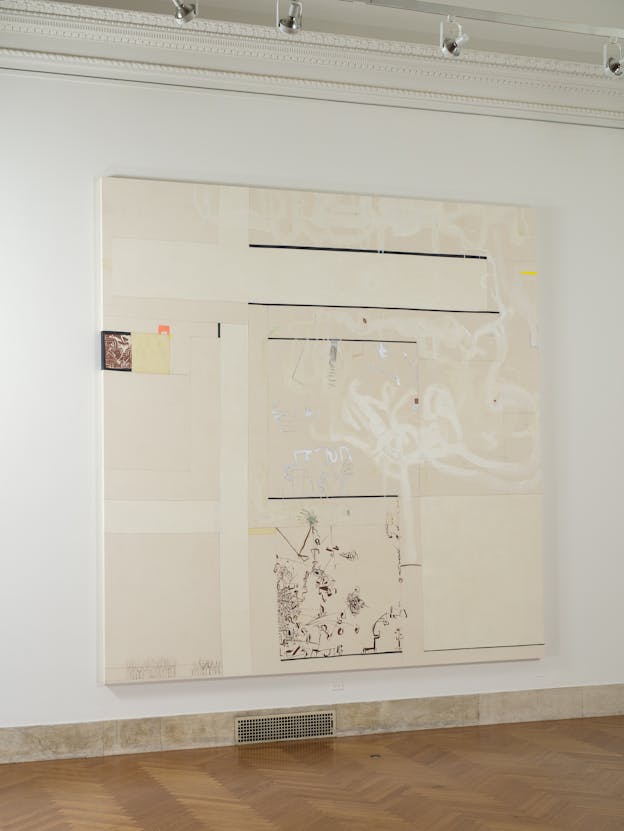Joan Waltemath

Artist Statement
I find myself challenging the notion that painting is experienced solely through vision. Building on what has come before in order to create the flow of time/space, means inseparability and complex connectivity. To find this place, we let go of our assumptions, beginning with the idea that painting is visible in a glance.
My work expands with your extended attention; being present engages your senses in the work of connecting through your being. When you approach my constructions, they are closed—you can see the basic design. Is that it? If you can still yourself long enough to experience the algorithms forming the ground layer, correspondences appear and become a vehicle to move through the composition. Now the markings can guide you.
These dimensions are not limited to the Euclidean world. The perceiver is not separate from the perceived. As synchronicity increases, depth opens up; this is the operative ratio of ceremonial space. My thoughts are coming at a time when our souls have been blasted apart by a world of constant interruption. To experience art as an impression on the soul requires preparation and an ability to focus the mind on matter.
- December 2021
Biography
Joan Waltemath is an artist whose work investigates the temporal and spatial registers of painting and drawing set in relation to architectonic elements. Informed by the cross-disciplinary exchange that began in 1970s downtown New York, her practice continues to respond dialogically to other media and disciplines.
Waltemath’s work emerges as a response to materials, visions, architectures, and historical contexts. Her series of eight large-scale paintings, The Treaty of 1868: an epic (2009-2018) takes as its subject her relationship to the genocide unleashed upon the Plains Indian tribes in the aftermath of the Fort Laramie treaty between the United States and the Dakota, Lakota, and Arapaho tribes. In 2011, after two years of work on the project, Waltemath sought out Lakota medicine man Dave Swallow and ceremonially requested his help in coming to terms with her legacy as a descendent of peoples who settled on the treaty land. Working on grounds of multiple sewn canvas panels, Waltemath’s paintings reflect the fractured and multi-perspectival nature of the history being told as she processes her ongoing relation with Swallow and his tiyospaye (“family of families”).
Her solo exhibitions include One does not negate the other, Peter Hionas Gallery, New York, NY (2015); Torso/Roots, Galerie von Bartha, Basel, Switzerland (2007); The invisible web of Iktomie iyokipi, Newspace, Los Angeles, CA (2002); and Joan Waltemath, The Drawing Center, New York, NY (1998). Her work was also presented in the group exhibition Géricault to Rockburne: Selections from the Michael and Juliet Rubenstein Collection, The Metropolitan Museum of Art, New York, NY (2020).
Waltemath is the recipient of the Jacob Lawrence Award from the American Academy of Arts and Letters (2018); a Creative Capital Award for Treaty of 1868 (2012); and a Pollock-Krasner Foundation Grant (2008). She has participated in residencies at the Bemis Center for Contemporary Arts, Omaha, NE (2017); Art Farm, Marquette, NE (2014-2016, 2011, 2009); the Jentel Foundation, Banner, WY (2008, 2005); and The Edward F. Albee Foundation, Montauk, NY (2006, 2003).
She is the director of the LeRoy E. Hoffberger School of Painting at the Maryland Institute College of Art, a member of the editorial collective for PUBLIC Journal, and editor-at-large of The Brooklyn Rail. She holds a B.F.A. from Rhode Island School of Design and an M.F.A. from Hunter College.





